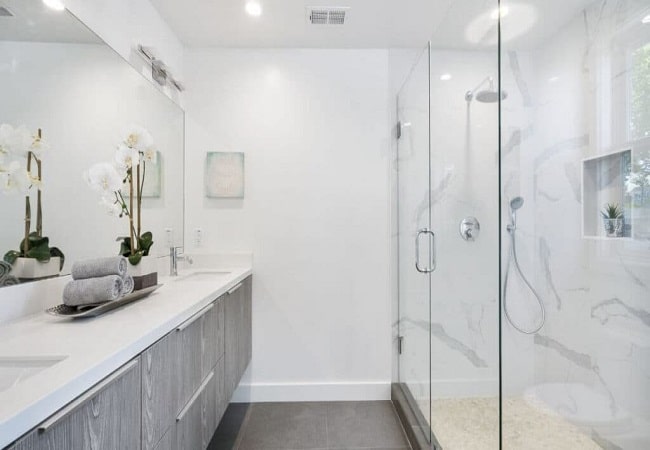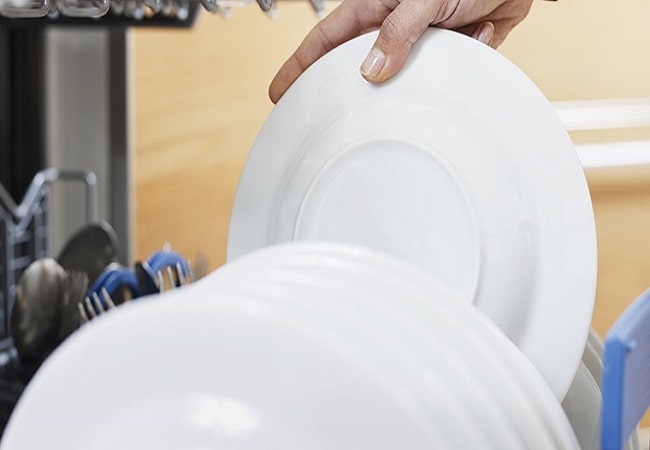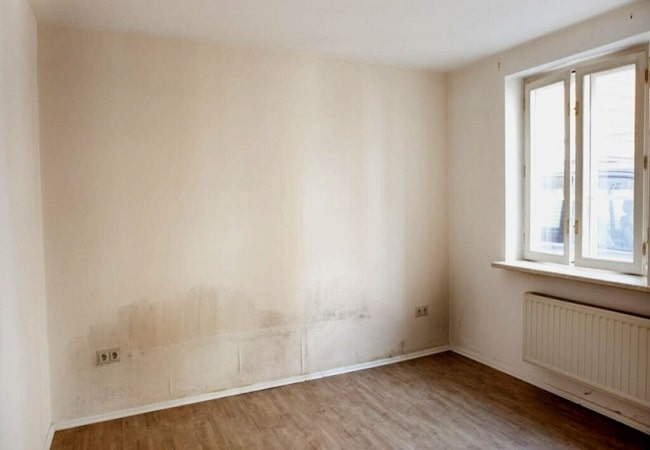Bathrooms are one of the most important rooms in any home. They are a place where we can relax and unwind after a long day. But bathrooms can also be a source of pollution. The main source of pollution in bathrooms is the release of harmful gases. These gases can come from cleaning products, personal care products, and even from the water itself.
How to ventilate a bathroom without windows is a great way to reduce the pollution in your bathroom and keep your family healthy. But how do you ventilate a bathroom without windows without affecting the environment? In this blog post, I’ll discuss the best way to ventilate a bathroom without windows and how it can benefit the environment.
Contents
Can You Ventilate A Bathroom Without Windows?
Yes, it is possible to ventilate a windowless bathroom. Windowless bathrooms are often found in older homes, and while they may be charming, they can pose a ventilation problem. There are a few ways to ventilate a windowless bathroom. Still, it would be best if you considered the pros and cons of each method before deciding on the best option for your home.
Common Signs That how to ventilate a bathroom without windows
Your bathroom is one of the most important rooms in your home regarding ventilation. Here are some common signs that your bathroom needs more ventilation:
- You can see mold or mildew on the walls, ceiling, or fixtures.
- There is a musty smell in the room.
- Your towels or clothes start to develop mildew after being hung up in the bathroom.
- You notice condensation on the walls or mirrors.
- Water droplets form on your ceiling after a shower.
- Your paint is peeling, and your wallpaper is bubbling or coming off the walls.
If you’ve noticed any of these issues in your bathroom, it’s time to take action and improve the ventilation.
Why Should You Ventilate a Bathroom with No Windows?
There are a few reasons you may want ventilation in a bathroom with no windows.
- One reason is that it can help control humidity levels.
- Another reason is that ventilation can help improve air quality.
- Proper ventilation can remove bad smells from your bathroom.
- Finally, ventilation can also help keep the room cooler in warm weather.
Regarding humidity levels, too much moisture can be uncomfortable and even dangerous.
- Moisture encourages mold growth and other problems in the environment of your bathroom.
- Too much moisture in the air can damage your walls, putty, and plaster.
When you have good ventilation, however, the room will not stay as humid for as long, decreasing your chances of experiencing these problems.
To improve air quality, ensure the bathroom has good ventilation. Poorly ventilated bathrooms can contribute to indoor air pollution and poor health. In fact, according to the American Lung Association, “poor indoor air quality caused by faulty or inadequate heating, cooling and ventilation systems costs the U.S. economy more than $260 billion each year in healthcare expenses and lost productivity”.
How to improve ventilation in a bathroom that doesn’t have a window
A windowless bathroom can feel like a cave. The lack of natural light and ventilation can make it feel stuffy, claustrophobic, and even dangerous. Here are some ways to improve ventilation in a windowless bathroom without a window:
Install an exhaust fan for ventilation
Bathrooms are often poorly ventilated, leading to poor air quality and decreased productivity. There are many ways to improve bathroom ventilation, but one of the most popular is installing an exhaust fan.
Exhaust fans pull stale air out of the bathroom and into the outdoors, where you can expel it into the atmosphere. This helps to improve air quality and increase productivity in the bathroom.
If you’re looking for a way to improve your bathroom ventilation without spending a lot of money, an exhaust fan may be just what you need.

Use A Fan
This is one of the most effective ways to ventilate a room, and it doesn’t require expensive renovation or equipment. Just ensure a good-quality fan that can move a lot of air.

Install A Hood
One way to improve ventilation in a bathroom without a window is to install a hood. A hood will trap moisture and dust, leading to mold growth. By installing a hood, you can reduce the risk of mold growing in the bathroom.

Use a Dehumidifier
A dehumidifier is another great way to improve ventilation in a bathroom without a window. Dehumidifiers take moisture out of the air, making mold and mildew less likely to grow in your bathroom. You must ensure that the dehumidifier is properly installed and maintained to avoid creating an unpleasant smell or attracting insects.

Use an Air Purifier
Air purifiers also help to remove contaminants from the air, including mold and mildew spores, which can cause odors.

Regularly Clean Your Bathroom
Another great way to improve ventilation in your bathroom is to make sure that you are regularly cleaning your bathroom. This includes wiping surfaces, mopping the floor, and cleaning the toilet and sink. You should also ensure to ventilate your bathroom by opening a window or door after each shower or bath.

Think about an air conditioner
Another option is to use portable A/C units or window A/Cs. These units can be plugged into an outlet and placed near where people are most likely to be hot or uncomfortable. They work by cooling outdoor air and blowing it into the bathroom through windows or vents. This will help keep people cool and comfortable during hot weather conditions.

Don’t close the door
One option to ventilate a bathroom without windows is to close the door. If the door is closed, fresh air can’t enter, and stale air can’t leave. This stagnant environment can cause mildew and odor problems.

Frequently Asked Questions
Does a bathroom vent have to be vented outside?
You must vent a bathroom vent to the outside to provide adequate fresh air for the occupants of the bathroom. Ventilation is especially important in bathrooms with poor ventilation, such as those near a furnace or air-conditioning unit.
How do I get rid of humidity in my bathroom?
When it comes to humidity, most people think of bedrooms and kitchens where the environment is generally dry. But bathrooms are also notorious for being high in humidity. And if you’re not careful, this excess moisture can cause problems like mold, mildew, and even asthma attacks.
How do I circulate the air in my bathroom?
To properly ventilate a bathroom, it is important to circulate the air. One way to do this is by using ventilation fans. Ventilation fans can be installed on the ceiling or floor and move the air around the room. This will help to avoid moisture build-up and improve ventilation.
How do you stop mold in a bathroom without a fan?
Mold is a very common problem in bathrooms, and without a fan, it can’t be stopped easily. One way to reduce the risk of mold is to ensure good ventilation in the bathroom. You can do this by opening all windows and doors or using an exhaust fan.
What absorbs humidity naturally?
Humidity is defined as the amount of water vapor in the air. There are many ways to reduce humidity in your home, but some methods are more natural than others.
Finally, you can place bowls of salt around the room. The salt will help absorb the air’s moisture and should be replaced every few weeks.
Final Thoughts
The best ways to improve ventilation in a bathroom without a window are to use an exhaust fan, open the door when showering, and keep the bathroom clean. By following these tips, you can ensure that your bathroom is safe and healthy.





Leave a Reply